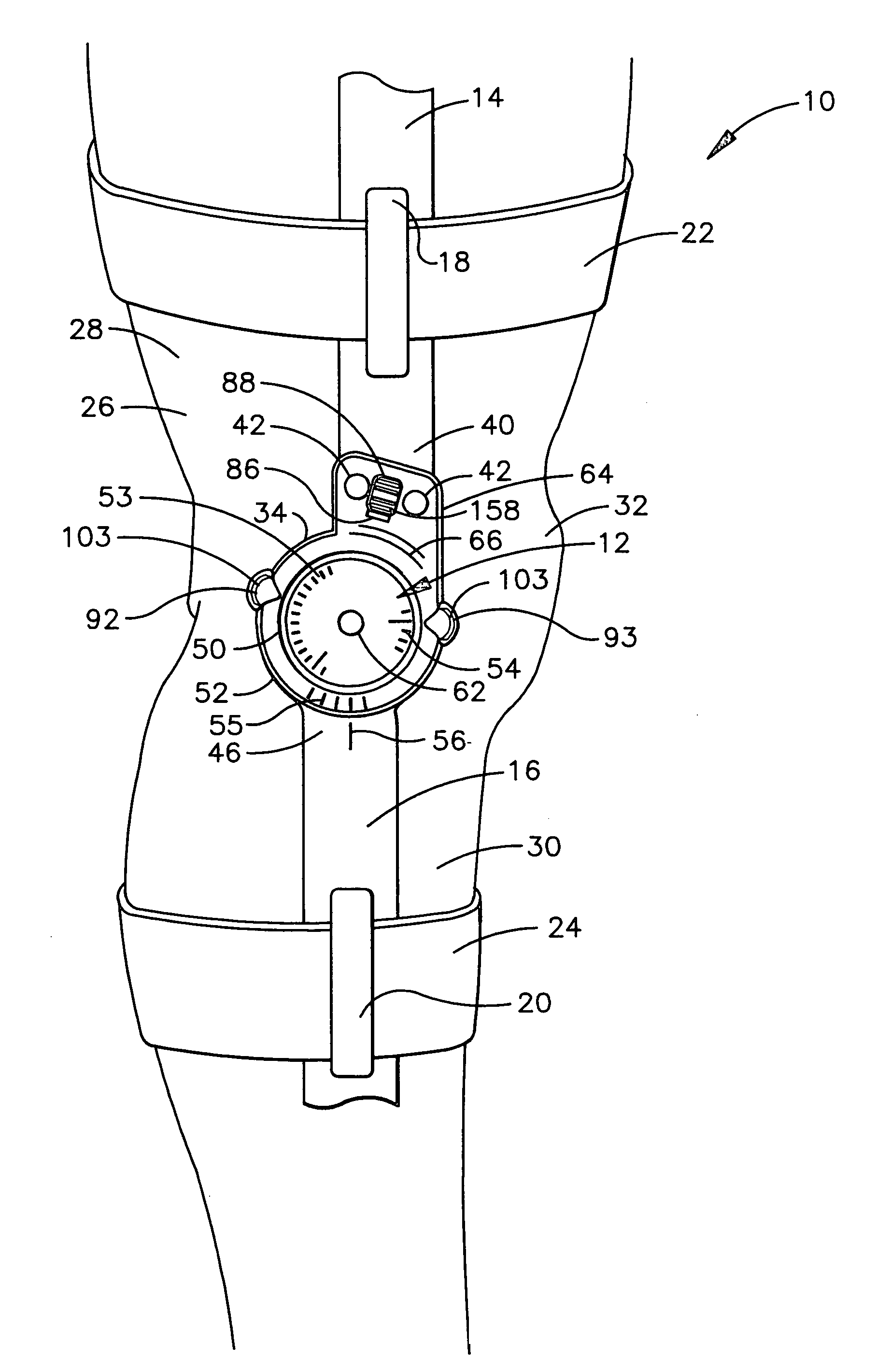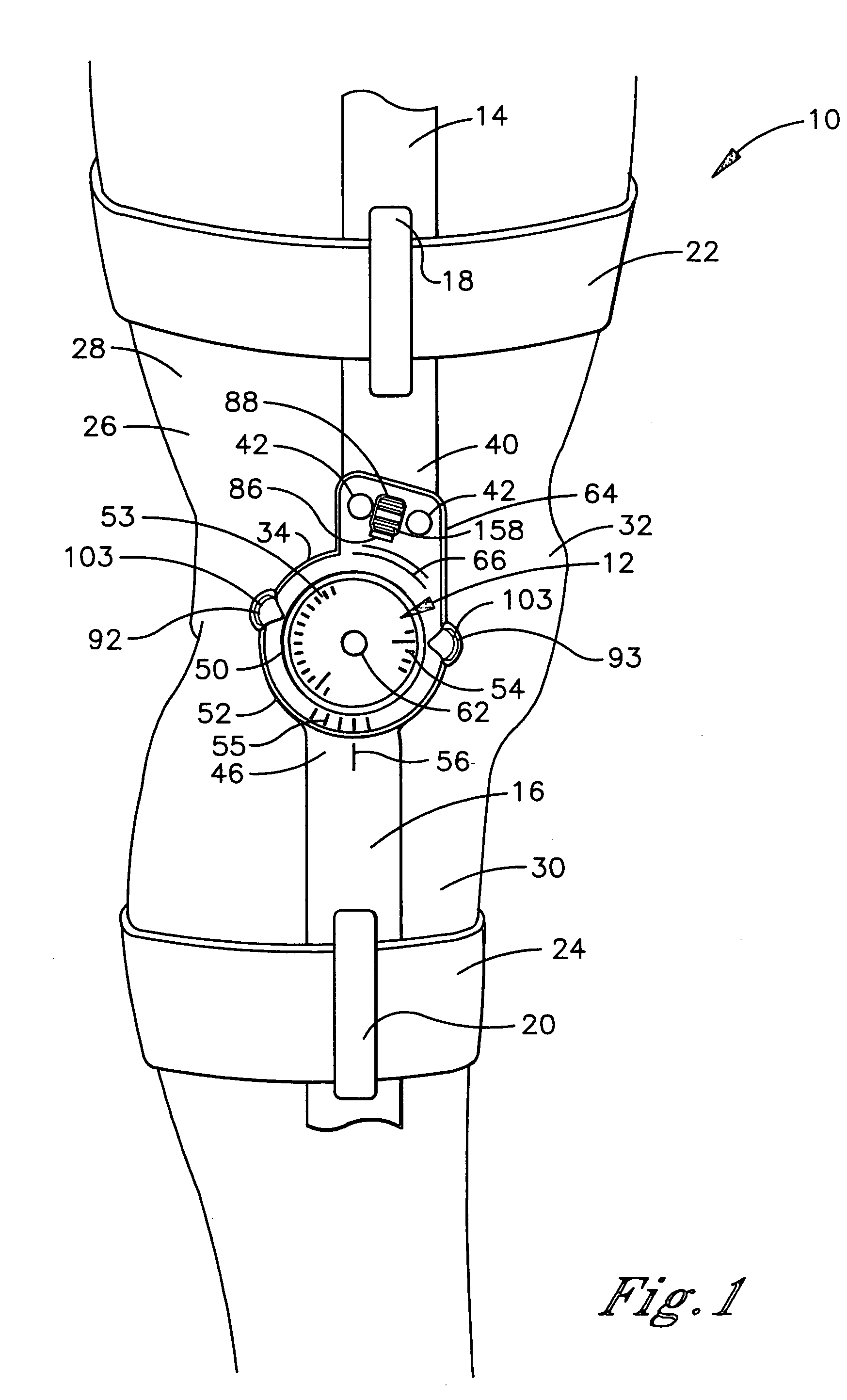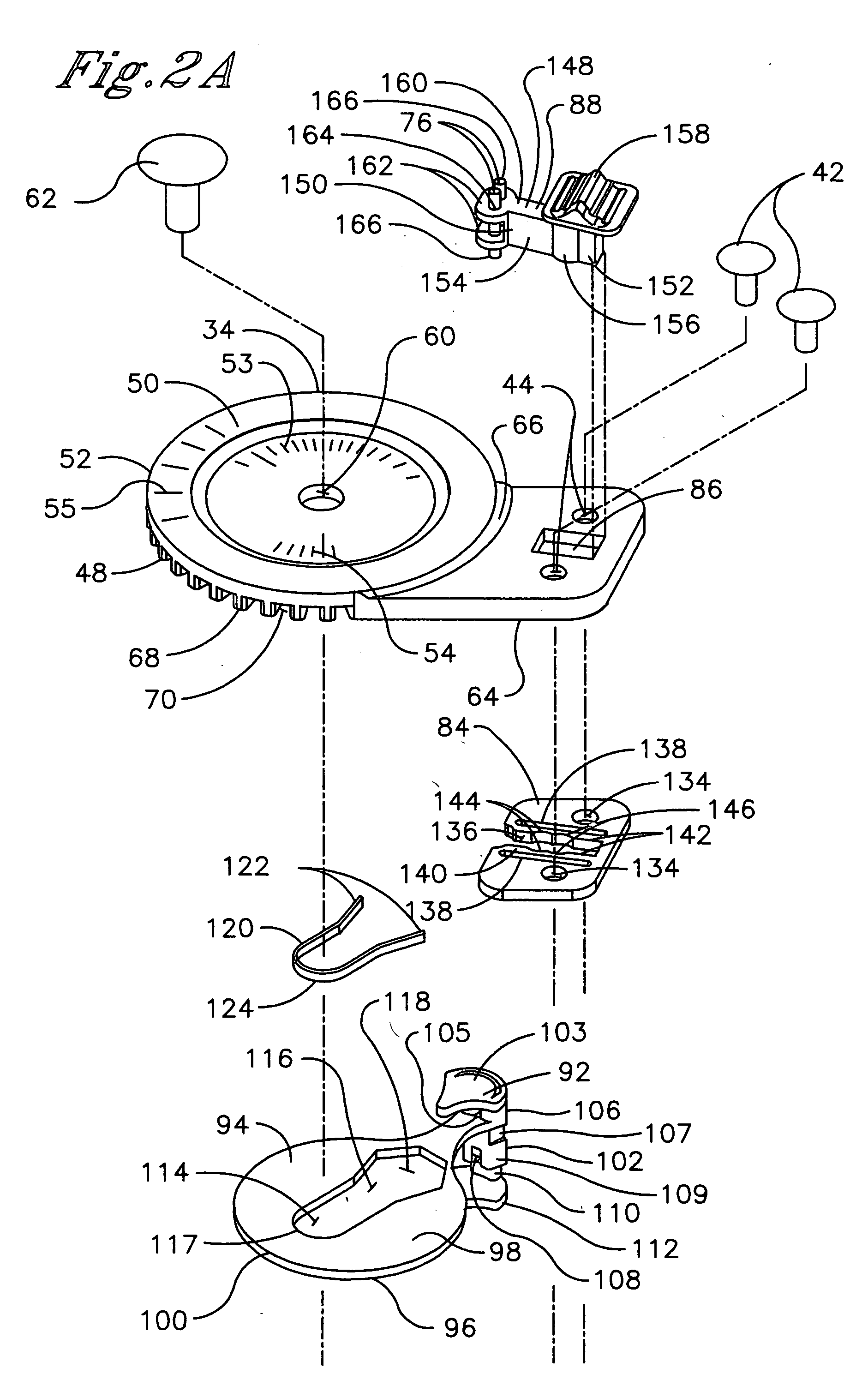Releasably locking hinge for an orthopedic brace having adjustable rotation limits
a technology of rotation limit and hinge, which is applied in the field of hinges for orthopedic braces, can solve the problems of inherently increasing the risk of erroneously resetting the rotation limit, screw misplacement or loss, and the task of adjusting the rotation range of the hinge, and can require a significant degree of dexterity
- Summary
- Abstract
- Description
- Claims
- Application Information
AI Technical Summary
Benefits of technology
Problems solved by technology
Method used
Image
Examples
Embodiment Construction
[0038] Referring initially to FIG. 1, a hinged orthopedic brace is shown and generally designated 10. There are a number of relative terms defined below which are used in the following description to distinguish various elements of the brace 10 from one another, but which are not to be construed as limiting the scope of the invention.
[0039] The relative terms “medial” and “lateral” characterize certain elements of the brace 10, which are positioned about the axis of rotation of the brace 10. The terms describe the relative proximity of the given element to the central longitudinal axis of the body of the user when the brace 10 is mounted thereon. In particular, a “medial” element is closer to the central longitudinal axis of the body, while a “lateral” element is further from the central longitudinal axis of the body.
[0040] The relative terms “inner” and “outer” likewise characterize certain elements of the brace 10, which are positioned about the axis of rotation of the brace 10....
PUM
 Login to View More
Login to View More Abstract
Description
Claims
Application Information
 Login to View More
Login to View More - R&D
- Intellectual Property
- Life Sciences
- Materials
- Tech Scout
- Unparalleled Data Quality
- Higher Quality Content
- 60% Fewer Hallucinations
Browse by: Latest US Patents, China's latest patents, Technical Efficacy Thesaurus, Application Domain, Technology Topic, Popular Technical Reports.
© 2025 PatSnap. All rights reserved.Legal|Privacy policy|Modern Slavery Act Transparency Statement|Sitemap|About US| Contact US: help@patsnap.com



